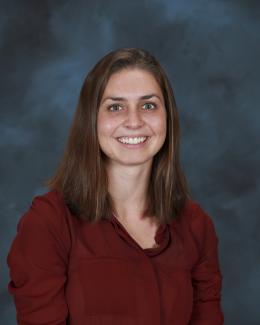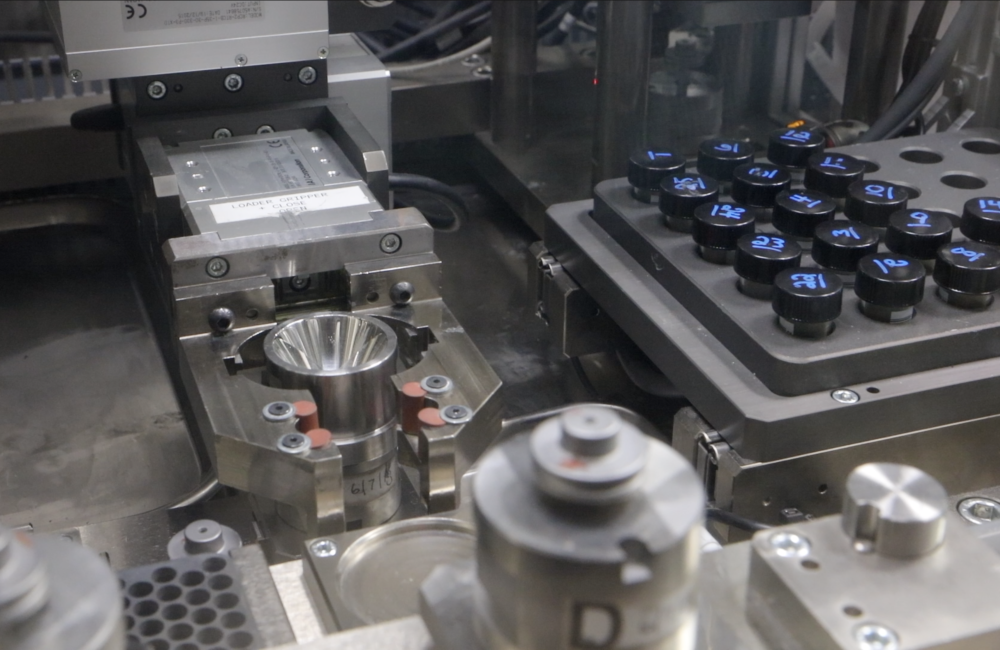By automating the production of neptunium oxide-aluminum pellets, Oak Ridge National Laboratory scientists have eliminated a key bottleneck when producing plutonium-238 used by NASA to fuel deep space exploration. Image credit: Oak Ridge National Laboratory, U.S. Dept. of Energy
This round-up of ten of the most-read news stories from Oak Ridge National Laboratory in 2019 showcases the diversity of the lab’s scientific and engineering research portfolio. Researchers at ORNL are taking advantage of investments in computing, neutron science, clean energy, nuclear science and national security to deliver impactful scientific solutions in the coming decade.
ORNL automates key process in plutonium-238 production
January 8
By automating the production of neptunium oxide-aluminum pellets, ORNL scientists have eliminated a key bottleneck when producing plutonium-238 used by NASA to fuel deep space exploration. Pu-238 provides a constant heat source through radioactive decay, a process that has powered spacecraft such as Cassini and the Mars Rover.
3D printing shapes building industry, creates rapid construction potential
March 14
A residential and commercial tower under development in Brooklyn that is changing the New York City skyline has its roots in research at ORNL. The tower’s white precast concrete façade rising from the waterfront site of the former Domino Sugar Factory evokes the form of a sugar crystal – a pattern created from 3D printed molds produced at DOE’s Manufacturing Demonstration Facility at ORNL.
U.S. Department of Energy and Cray to deliver record-setting Frontier supercomputer at ORNL
May 7
DOE announced a contract with Cray Inc. to build the Frontier supercomputer at ORNL, which is anticipated to debut in 2021 as the world’s most powerful computer with a performance of greater than 1.5 exaflops. Scheduled for delivery in 2021, Frontier will accelerate innovation in science and technology and maintain U.S. leadership in high-performance computing and artificial intelligence.
Unexpected observation of ice at low temperature, high pressure questions ice, water theory
May 22
Through an experiment designed to create a super-cold state of water, ORNL scientists used neutron scattering to discover a pathway to the unexpected formation of dense, crystalline phases of ice thought to exist beyond Earth’s limits. Observation of these particular crystalline ice phases challenges accepted theories about super-cooled water and amorphous, or non-crystalline, ice. The researchers’ findings will also lead to better basic understanding of ice and its various phases found on other planets and moons and elsewhere in space.
2D crystals conforming to 3D curves create strain for engineering quantum devices
June 19
A team led by ORNL scientists explored how atomically thin two-dimensional crystals can grow over 3D objects and how the curvature of those objects can stretch and strain the crystals. The findings point to a strategy for engineering strain directly during the growth of atomically thin crystals to fabricate single photon emitters for quantum information processing.
ORNL scientists make fundamental discovery to creating better crops
July 22
An ORNL-led team of scientists discovered the specific gene that controls an important symbiotic relationship between plants and soil fungi, and successfully facilitated the symbiosis in a plant that typically resists it. The discovery could lead to the development of bioenergy and food crops that can withstand harsh growing conditions, resist pathogens and pests, require less chemical fertilizer and produce larger and more plentiful plants per acre.
From trash to treasure: Electronic waste is mined for rare earth elements
August 14
ORNL researchers have invented a process to extract rare earth elements from the scrapped magnets of used hard drives and other sources. Researchers are working with licensee Momentum Technologies of Dallas to further develop the energy-efficient, cost-effective, environmentally friendly process to recover high-value critical materials.
ORNL develops, deploys AI capabilities across research portfolio
September 24
To accelerate promising AI applications in diverse research fields, ORNL has established a labwide AI Initiative, and its success will help to ensure U.S. economic competitiveness and national security. This internal investment brings the lab’s AI expertise, computing resources and user facilities together to facilitate analyses of massive datasets that would otherwise be unmanageable.
Supercomputing, neutrons unite to unravel structures of intrinsically disordered protein
October 3
Using the Titan supercomputer and the Spallation Neutron Source at ORNL, scientists created the most accurate 3D model yet of an intrinsically disordered protein, revealing the ensemble of its atomic-level structures.
Department of Energy announces private-public awards to advance fusion energy technology
October 15
DOE announced funding for 12 projects with private industry to enable collaboration with DOE national laboratories on overcoming challenges in fusion energy development. The awards are the first provided through the Innovation Network for Fusion Energy program, or INFUSE, which is managed by ORNL.



